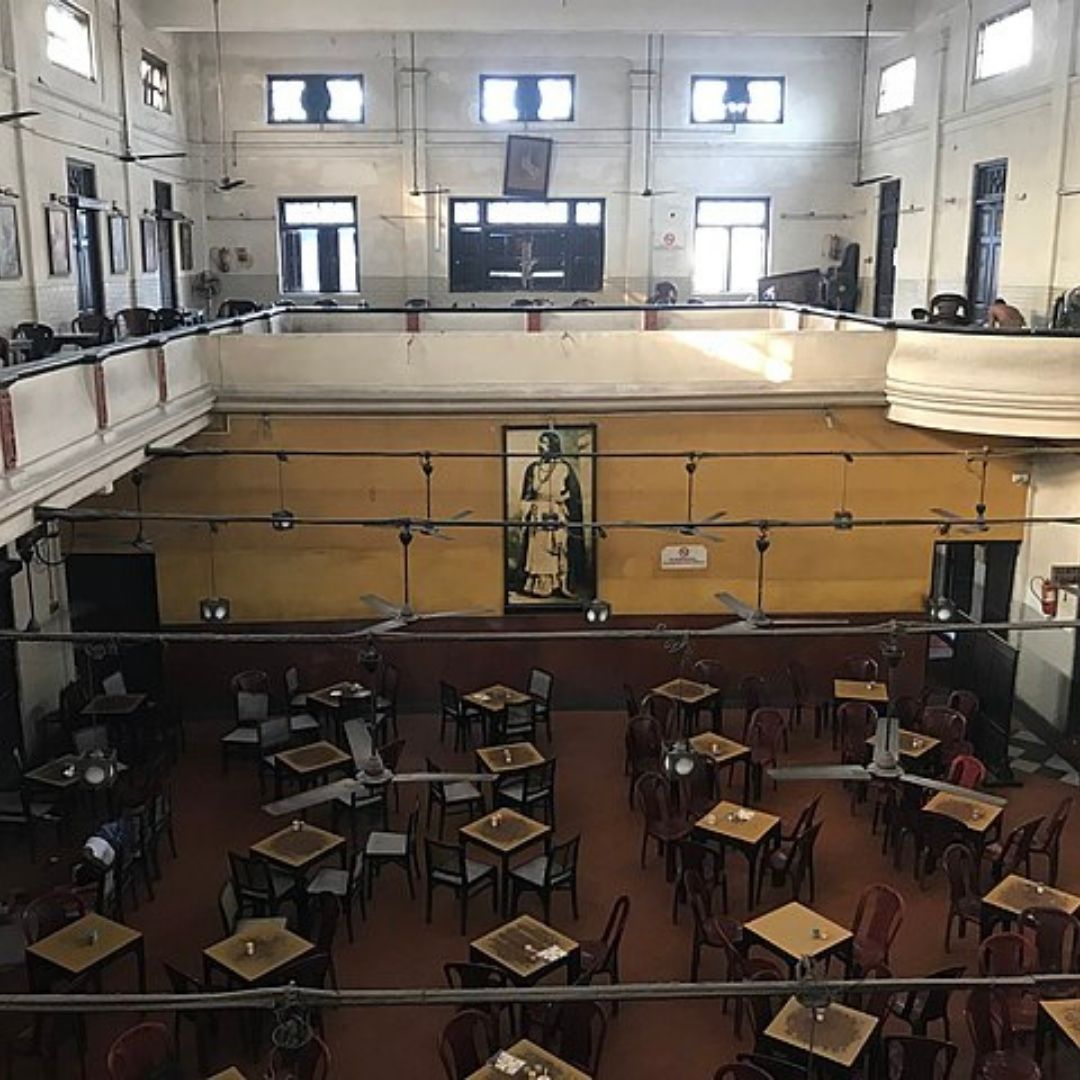
Image Credits: Wikimedia
How 'Indian Coffee House' Became A Prominent Cultural Hub In The Country
Writer: Akanksha Saxena
I am a budding journalist who loves to write stories that have the ability to connect with people.
India, 28 Oct 2021 12:39 PM GMT
Editor : Ankita Singh |
A literature lover who likes delving deeper into a wide range of societal issues and expresses her opinions about the same. Keeps looking for best-read recommendations while enjoying her coffee and tea.
Creatives : Akanksha Saxena
I am a budding journalist who loves to write stories that have the ability to connect with people.
From Satyajit Ray to Firaq Gorakhpuri, Mrinal Sen, etc, iconic poets, filmmakers and activists made this famous eatery their 'adda' where they had enlightening discussions over a cup of coffee.
Our country is an interesting blend of people co-existing with different preferences. When it comes to beverages, tea and coffee are extremely popular in the country as they are consumed in equal parts. The ongoing debate on which is better is never going to die down.
However, both of them are steeped in history. When it comes to coffee, one cannot just associate it with the swanky cafes that exist today. The drink's history in India goes back to an iconic eatery, that exists even today. Called 'Indian Coffee House', it is an institution that dates back to the pre-independence era and has been a political and cultural hub over the years in various states.
From 'India Coffee House' To 'Indian Coffee House'
The Indian Coffee House was an establishment that was run by a bunch of worker co-operatives societies. The Indian Government set up the Coffee Board in the 1940s to promote coffee drinking, as well as the sale of coffee seeds. Indians were known for growing the same since the 16th century. However, the idea behind these 'coffee houses' came only when the British took over the country.
To take this initiative forward, the 'India Coffee House' were inaugurated in various cities around the country. At that time, there were around 50 such outlets during the British rule. The first outlet opened in Mumbai's Churchgate in 1936. While the suggested it catering to Indians, the establishment discriminated against the native people as they did not allow them entry.
However, it all changed post-independence in the 1950s. The government suffered a massive loss due to a change in the policies at the end of 1957, that resulted in these Coffee Houses shutting down. This was a big blow for the workers whose livelihood depended on them. The All India Coffee Board Labour Union came up in arms against this move. Its leader, Mr. A.K Gopalan, approached the then Prime Minister, Jawaharlal Nehru. He advised them to form the Worker Co-Operative Societies. The first revamped versions were inaugurated in Bangalore and New Delhi respectively. The total being 14, they reopened the outlets under the name 'Indian Coffee House' that exists even today.
A Political And Cultural Hub
A cup of piping hot coffee and conversation always go hand in hand. Therefore, it came as no surprise when the Indian Coffee House became the perfect 'adda' for renowned poets, filmmakers, activists and political leaders around the country.
Kerala has a total of 51 outlets. The one in Thrissur was inaugurated by A.K Gopalan himself 1958. In West Bengal, the most famous outlet is located in Kolkata's College Street. It was a popular hangout place for iconic public figures such as filmmakers Satyajit Ray and Mrinal Sen, Amartya Sen, Aparna Sen, Sunil Gangopadhyay and the like. In fact, Manna Dey also composed a song on the same!
The outlet in Delhi is situated in Connaught Place since 1957. It was a place that was filled with people, from activists to political leaders, especially in the 1960s and 1970s closer to the year when Indira Gandhi declared the 'Emergency' in the country. The Indian Coffee House in Allahabad (now Prayagraj) had poets like Firaq Gorakhpuri flocking there and held enlightening discussions.
Also Read: Remembering Ashfaqulla Khan, The Kakori Rebel Who Was Hanged By Britishers
 All section
All section














